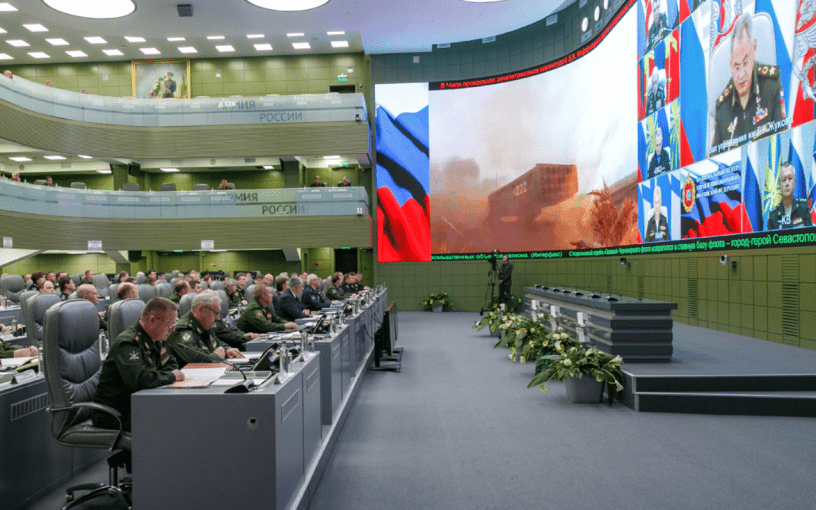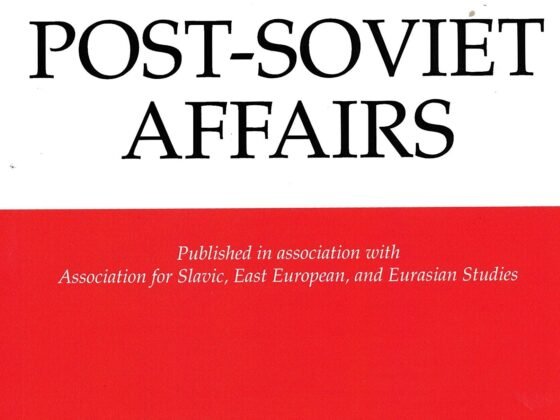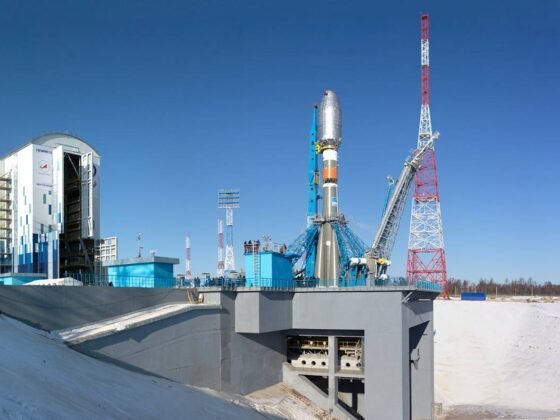(PONARS Eurasia Policy Memo) The role of nuclear weapons in Russia’s national security policy moved to the center of attention last year following the new U.S. Nuclear Posture Review, which contained recommendations based, in part, on the assumption that Russia had reduced its nuclear threshold under an “escalate to de-escalate“ strategy. Many contested the U.S. claim and pointed out that the Russian doctrine did not contain those terms or that strategy, and that its nuclear weapons would only be assigned to situations when the “very existence” of the country was at stake. This certainly does not conform to the image of a lowered threshold.
It is always difficult to determine exactly how high any state’s nuclear threshold is, at least when one relies solely on open sources. Nonetheless, it is clear that there has been fluctuation in the Russian threshold in the post-Cold War period. Public and expert opinions on the matter have had their own fluctuations and reveal quite different assumptions about the role of nuclear weapons and the scenarios under which they could be used. Adding to the lack of clarity indeed, Russia’s military doctrines in 2000, 2010, and 2014 first stated that it could launch a nuclear attack if a situation becomes “critical,” then it used the term “threatens,” and then it presented the toned-down idea of “non-nuclear deterrence.” Looking at the scope and details of the matter with some hindsight, Russia did temporarily raise its nuclear weapon profile over the course of the 2000s, but Moscow became more confident in its conventional forces post-2014 and the threshold debate simmered down in Russian officialdom, even if the analytical clatter persisted.
What Official Russian Statements Say (or Seem to Say)
Uncertainty about the height of the nuclear threshold began in 1993 with Russia’s first military doctrine. Earlier, Soviet policy on nuclear weapon use was quite clear, at least after 1982 when the Soviet Union made an unequivocal no-first-nuclear-use (NFU) pledge, which meant a very high nuclear threshold. It declared it would only use nuclear weapons in response to a nuclear attack, which under the conditions of the Cold War, meant, by default, World War III. Prior to 1982, Soviet doctrine allowed for nuclear use in response to a large-scale conventional attack, but according to a declassified Soviet document from 1964, such an attack could only take place in the context of world war, which by default involved nuclear weapons. Hence, the 1982 pledge amounted to a rather marginal change in the nuclear threshold.
In revocation of the NFU pledge in 1993, a degree of uncertainty about the nuclear threshold was introduced. But did it really mean that the threshold was perceptibly lowered? Not necessarily. A range of official documents—such as the 1996 and 1997 National Security Concepts, as well as a package of documents on defense policy and nuclear posture adopted in 1998 that were classified but whose essence could be derived from open sources—clearly indicated that the only contingency for nuclear use was global war. Under post-Cold War conditions, this meant that nuclear weapons had a primarily symbolic role, and if the nuclear threshold increased at all, then it did so only marginally, and at the rhetorical level.
The truly serious change came in 2000 when Russia’s new Military Doctrine introduced a second nuclear contingency, “regional wars.” It assigned nuclear weapons to two situations: in response to a nuclear attack or in response to a conventional attack when a situation becomes “critical for the national security of the Russian Federation.” The specific scenario the document clearly had in mind was potential U.S. and NATO interference in the war in Chechnya similar to their interference in Kosovo in 1999. This represented a significant lowering of the nuclear threshold. That said, the new policy conceptually was just a variation of the well-known NATO policy dating back to the 1960s that foresaw reliance on nuclear weapons to balance Soviet conventional superiority.
Whether this policy should be called “de-escalation” is actually quite irrelevant. The term had been borrowed from a 1999 article in Voyennaya mysl’ (and introduced into English-language discourse by myself in 2000). Those authors had used it for convenience to capture the introduction of a new mission but never claimed the term was part of official documents.
The 2010 Military Doctrine kept the contingencies (global war and regional war) but changed the attack criterion from “critical” situations to one that “threatens the very existence of the state.” This change created a mild inconsistency. A regional war is defined as “war with participation of two or more states of the same region that is waged by national or coalition armed forces.” A regional war could, indeed, create a “critical” situation, but it is difficult to imagine one threatening the survival of Russia (except, perhaps, a war involving China)—but the list of threats and challenges to Russian security clearly indicates that the authors had the United States and NATO in their minds. Thus, it is hard to say whether the new language can be classified as pointing to a higher nuclear threshold. The criterion changed, but the (regional and global) missions remained the same.
This apparent inconsistency was removed/fixed in the 2014 Military Doctrine. While language pertaining to nuclear use remained the same as in 2010, the new document introduced the notion of “non-nuclear deterrence.” By that time, Russia had finally acquired long-range, precision-guided, conventional weapons (used for the first time in combat in the fall of 2015 in Syria) and although the capability was still nascent, the new doctrine sought to define its place in the defense posture.
Thus, in 2014, the nuclear threshold increased. Moscow clearly communicated its intent to fight regional wars with conventional weapons. The fact that nuclear weapons remain assigned to the category of “regional” conflicts may be interpreted in two ways that are not mutually exclusive. On the one hand, conventional capability was (and remains) quite limited and needs to be built up until Russia can fully transfer to these weapons the mission of terminating a regional war on status quo ante conditions. The other possible explanation is that nuclear weapons will remain assigned to that mission, but there will be an additional step on the escalation ladder.
Either way, the U.S. 2018 NPR seems to respond to a Russian policy that was in force until 2010 or, at the latest, 2014. It is a pity that Washington debates greater reliance on nuclear weapons at a time when Russia decreases it. It would not be surprising if others—Moscow first of all—concluded that the United States advocated for the reduced role of nuclear weapons only as long as it had overwhelming preponderance in conventional warfighting capability. Such an assumption is not correct but can be expected.
Russian Perceptions of Nuclear Weapons
A close look at media and expert publications suggests that Russian public and expert perception of the role of nuclear weapons often has had a rather remote relationship to the evolution of official strategy. On another tack, however, the vast majority of the Russian public love their nuclear weapons. They are a symbol of status and the ultimate security guarantee. Nuclear weapons are associated with power, influence and security. That love, perhaps paradoxically, coexists with a deep fear of nuclear war and a belief that such an occurrence would end civilization.
Nuclear weapons were invoked particularly often by both the public and parts of the government—especially the highest level—in the 1990s even though at that time official nuclear strategy did not foresee much role for them. For the public especially, the high profile of nuclear weapons appeared to be psychological compensation for political and social turmoil, economic crisis, loss of status, the disastrous state of the armed forces, and proliferating problems with neighbors—former Soviet republics and former Soviet allies. While that attitude was understandable on the part of the public, similar attitudes on the part of many officials, starting with Boris Yeltsin himself, may be more difficult to explain. Yeltsin tended to alternate between a cooperative, pro-arms control stance and praising Russia’s nuclear weapons. Arms control was a symbol of cooperation, not a tool to stabilize mutual deterrence at low levels, while references to the destructive power of nuclear weapons was a tool to remind the world about Russia’s great power status.
At the expert level, things were different. The most influential group during the 1990s were experts who had made their name in the previous decade, people like Alexei Arbatov, Sergey Rogov, Andrei Kokoshin (onetime deputy minister of defense), Sergey Kortunov (one of the principal authors of the 1996 National Security Concept), and others. This group made the greatest contribution to the official guidance on the role of nuclear weapons and nuclear strategy. Their view of nuclear weapons proceeded from the concept of “defense sufficiency” that was actively developed toward the end of 1980s; they tended to view nuclear weapons as the backbone of Russia’s security, but saw little practical role for them. Consequently, they advocated the minimal size of the force, high survivability, and strong emphasis on arms control as a tool to ensure stable mutual deterrence with the United States. In effect, the only role for nuclear weapons was that of “central deterrence”—the stabilizer in a great power relationship.
During the 1990s, the views of that group overlapped with those of the military leadership, which—perhaps in acknowledgment of financial limitations—pursued very limited research and development programs and was engaged in the Cooperative Threat Reduction program launched by the United States. It also helped that key leadership figures of the main branch of the military in charge of nuclear weapons, the Strategic Rocket Forces, rose to commanding positions in the 1980s and, by and large, shared the ideas that reshaped Soviet strategic posture and arms control policies.
Conservative opposition to that perspective surfaced in 1996 during ratification of the 1993 START II treaty (the ratification did not take place until 2000), but that surge was short lived. Advocacy of numerical equality with the United States and greater build-up effort, obviously, continued to exist throughout the 1990s, but was not particularly prominent. This opposition could not offer much new in terms of the role for nuclear weapons and it mostly limited itself to “patriotic” rhetoric and insistence on numerical equality with the United States.
It was only at the very end of the 1990s that military analysts began to think about an expanded role for nuclear weapons and more expansive modernization efforts. These two strands received a boost from the war in Kosovo in 1999 and the new U.S. effort to build a large-scale missile defense system (1998 and later, up to the withdrawal from the ABM Treaty in 2002). The regional war mission, which for want of a better term, could be called “de-escalation,” did not receive much attention in research and development efforts. However, in 2003, the White Paper published by the Ministry of Defense openly declared that reliance on nuclear weapons was temporary—until such time that Russia acquires a modern conventional capability, which happened, at least at the military doctrine level, in 2014. Accordingly, funding and political attention concentrated on the more traditional nuclear mission, that of strategic deterrence.
Debates outside the military, however, paid relatively little attention to doctrinal issues, including in particular the “regional war” contingency. The “arms control” group of experts, which dominated the discourse in the 1990s, was gradually losing influence. The more conservative groups, which in the last decade concentrated largely around the military-oriented journal Voyenno-promyshlennyi kurier, obviously welcomed the more expansive research and development programs as well as generally higher profile of nuclear weapons in Russia’s national security policy. They also began to more explicitly advocate a lower nuclear threshold by invoking, rhetorically, the use of nuclear weapons in a broad range of contingencies bordering on offensive uses—the capability as a “cover” for proactive, even assertive Russian foreign policy. In this sense, they went beyond the official doctrine, which emphasized the defensive nature of a “regional” nuclear mission.
The high point of that strand of thought was at the end of the 2000s when, during debates over a new edition of the military doctrine in 2009, some began to suggest a further expansion of nuclear missions to the category of “local wars.” That proposal apparently gained some support, even at high levels in the government, but was in the end rejected. Instead, as noted above, the 2010 Doctrine tightened the criterion for nuclear use. Over time, even that strand of thought began to fade. In the 2010s, debates about nuclear strategy and nuclear missions declined. At present, it would appear that official policy is no longer really questioned by groups of experts and the public. There is still considerable debate about specific modernization programs, including about their desirability and the wisdom of spending money on one or another new type of weapon, but not about strategy.
Conclusion
When one traces the evolution of official Russian nuclear strategy, on the one hand, and public and expert debates about nuclear strategy, on the other, the most striking finding is the relatively weak connection between the two. Even among experts, perceptions of nuclear weapons appeared to play a considerably greater role than more formal cost-benefit analysis of their utility and “inventive” approach to their uses. In particular, the “twist” of the 2000-2010 period, which at least temporarily introduced a new mission and lowered the nuclear threshold, did not receive much attention among some experts and was carried way too far by others; the middle area was almost absent. This begs for a conclusion that debates outside the government—and to a degree within the government (as witnessed by an attempt to expand nuclear missions in 2009)—have been primarily ideological and did not significantly contribute to the evolution of Russian nuclear strategy.
Of greater relevance, apparently, was the example of the United States, in particular the transfer of many warfighting missions from nuclear to conventional weapons, which took place in the 1990s. Conventional capability, which is infinitely more usable in foreign policy, whether for defensive or offensive purposes, as the United States has demonstrated multiple times beginning with the first Gulf War in 1991, was the main goal of the Russian military. Once the period of turmoil ushered in by the end of the Cold War and the breakup of the Soviet Union ended and defense planning became more serious, that line became prevalent. In hindsight, the “de-escalation” mission of 2000-2010 was but a short-lived “quick fix” that public debates were not quite able to identify and reflect on. Measuring a nuclear threshold in terms of it being “higher” or “lower” can be misleading because it overlooks the (more) important issue of the missions to which nuclear weapons may or may not be assigned. Bearing this caveat in mind, it is possible to say that today’s nuclear threshold is approximately the same as it was in the 1990s.
Nikolai Sokov is a Senior Fellow at the Vienna Center for Disarmament and Non‑Proliferation.
[PDF]
Homepage image credit.











